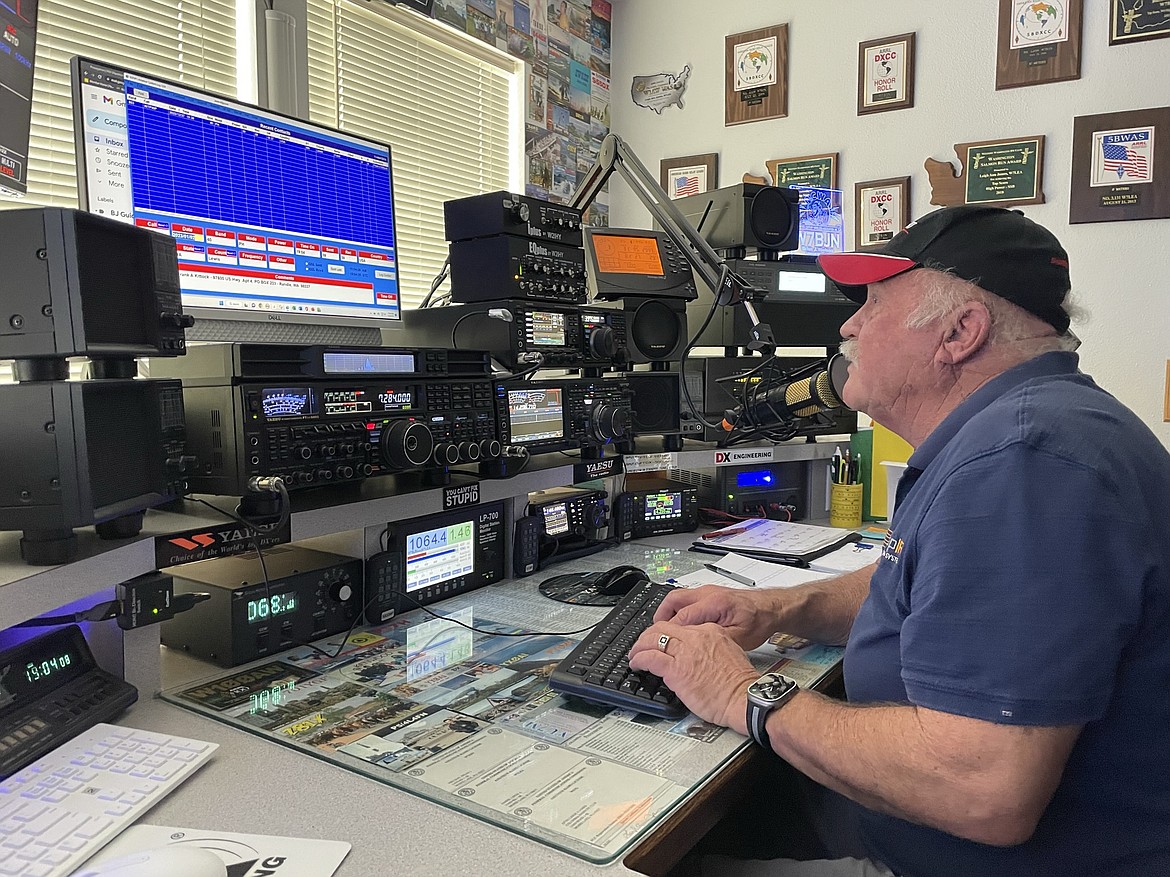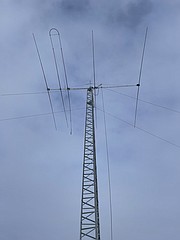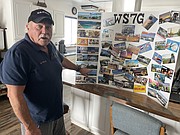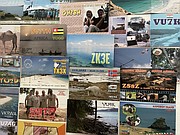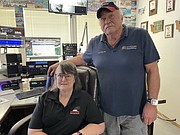QSL? Roger roger.
MOSES LAKE — “Whiskey 7 Bravo Juliet November, is that a roger?”
The man’s voice, using the NATO phonetic alphabet to spell out a call sign, had a clear Caribbean lilt discernable even through the static and the distortion.
“Roger, the name here is Brian.” Brian Nielson acknowledged his call sign and spoke clearly into the microphone hanging over his desk. “Go ahead.”
“You’re coming in five by nine here on the beach in Barbados, over,” the voice replied, using the international amateur radio code to describe a clear and strong broadcast.
The Barbadian then described the sun, the sand, and the surf right in front of him, and the fact that he was taking the day off from work.
“Oh, on the beach, roger,” Nielsen said. “It’s kind of chilly here. We’re not on the beach. It’s snowy outside and 32 degrees. And we got about an inch of snow this morning. So I’m really envying you guys over there.”
Nielsen extended an invitation to visit Moses Lake next time his conversation partner was in the United States.
“Take care and 73,” Nielsen said, adding his call sign — W7BJN — and using the international amateur radio code for kindest regards.
“Roger roger,” the Barbadian radio operator replied. “73s to you, my friend, and good luck.”
It was a fairly ordinary Monday afternoon for Nielsen as he sat in what used to be the office of his Moses Lake home, talking with a trio of amateur radio operators in Barbados and Jamaica after a morning of running a check-in for a regional amateur radio net logging the call signs of operators from across the West Coast.
Amateur radio — allowing users both to listen and to broadcast — has existed in one form or another for more than a century, and it’s been Nielsen’s big hobby for the last 40 years. He runs this morning net several days a week and then supervises the Columbia Basin DX Club’s weekly Monday night net as well. His radio room is full of transmitters, amplifiers and other electronic equipment designed to boost his signal, control the large antenna outside and improve reception.
The walls are covered with plaques and QSL cards — QSL being old maritime radio code meaning “can you hear me?” as a question and “I can hear you” as a response — from radio amateurs across the world, including a few really rare places like North Korea, and knickknacks like a framed guitar pick from Eagles guitarist and avid radio amateur Joe Walsh.
“This Russian guy somehow got permission through a school or something to go to North Korea and operate in North Korea,” Nielsen said.
The nets where amateur radio operators gather are places to talk and get to know each other. But mostly, the net exists to ensure that portions of the electromagnetic spectrum used for amateur radio are continually used, Nieson said, so that the Federal Communications Commission and the global manager of the spectrum — the International Telecommunications Union — don’t allocate those frequencies to other uses.
Amateur radio takes advantage of the properties of a large portion of the radio spectrum that allows radio waves to bounce back down to earth. Depending on atmospheric conditions and the broadcast frequency used, you can hear — and transmit — radio signals from across the planet. Including some Caribbean residents enjoying better weather than a Columbia Basin winter.
“You meet all these people that are ham radio operators,” he said. “Sooner or later, I meet a lot of them. And some of them are friends for life.”
Even in an era of cell phones and satellite internet, Nielson said amateur radio still has its uses, especially in emergencies like earthquakes and major storms when power fails and networks go down or when people are stranded or in trouble. For example, Leigh Ann said, they once helped a boater let his family know he was okay after he’d been through a major storm at sea.
In an instance like that, Leigh Ann — who is also a licensed amateur radio operator with the call sign W7LEA — said they silenced all talk on the net, got the boater’s information, and passed it on.
“He was in a boat, anchored offshore, and couldn’t get ahold of his wife,” she said. “So we got ahold of his wife.”
“And that’s the reason these nets are so important,” Brian added. “You can talk to everybody all over.”
In addition to broadcasting on his own, Brian also helps to run the Columbia Basin DX Club, which has its own call sign of WS7G. Every February, club members gather in George for three days of transmitting to mark George Washington’s birthday, which falls on Feb. 22. It keeps hobbyists busy doing what they enjoy and hopefully exposes others to the hobby and encourages them to get their licenses and get involved.
Users don’t need the sophisticated broadcast center the Nielsons have created in their home, Brian said; you can get into the hobby with a transceiver for less than the cost of a higher-end iPhone.
“You can get into this hobby for less than $800,” he said. “You can run a wire up a tree where you live. … That’s all you really need. I’ve talked to guys all over the world on that wire.”
And then Brian goes back to running the check-in for the regional net. The list of towns spans the West Coast — Klamath Falls and Madras in Oregon; Marysville in both California and Washington; Lucile in Idaho — as the checkin continues.
“Welcome back to the net after a while,” Brian said, inviting more amateurs to let him know they are out there. “I’ll take another.”
The Columbia Basin DX Club can be reached online at cbn.homestead.com/WS7G, or you can listen live on a shortwave radio with single sideband at 3.960 megahertz lower side band every Monday evening beginning at 6 p.m.
Charles H. Featherstone can be reached at cfeatherstone@columbiabasinherald.com.



